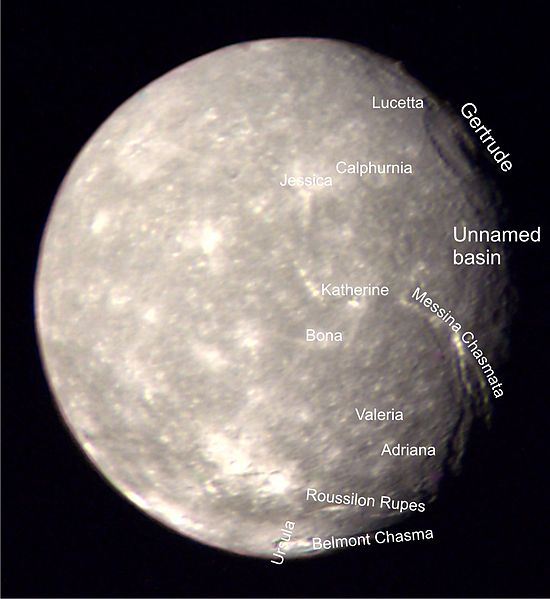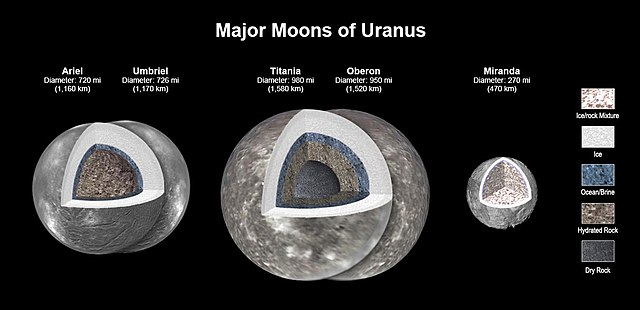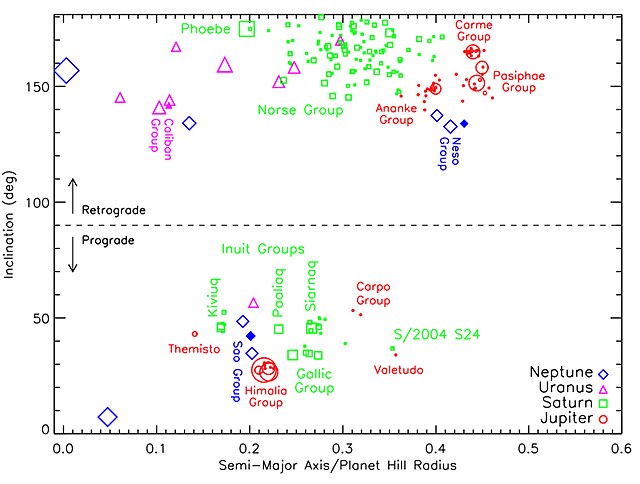Titania, also designated Uranus III, is the largest of the moons of Uranus. At a diameter of 1,578 kilometres (981 mi) it is the eighth largest moon in the Solar System, with a surface area comparable to that of Australia. Discovered by William Herschel in 1787, it is named after the queen of the fairies in Shakespeare's A Midsummer Night's Dream. Its orbit lies inside Uranus's magnetosphere.
Titania, as imaged by Voyager 2, January 1986. Along the terminator are visible the moon's largest known impact crater, Gertrude, at upper right and several enormous canyon-like grabens at lower right.
Voyager 2's highest-resolution image of Titania shows moderately cratered plains, enormous rifts and long scarps. Near the bottom, a region of smoother plains including the crater Ursula is split by the graben Belmont Chasma.
Titania with some surface features labeled. The south pole is situated close to the unlabeled bright crater below and left of the crater Jessica.
Messina Chasma—a large canyon on Titania
Uranus, the seventh planet of the Solar System, has 28 confirmed moons. Most of them are named after characters that appear in, or are mentioned in, the works of William Shakespeare and Alexander Pope. Uranus's moons are divided into three groups: thirteen inner moons, five major moons, and ten irregular moons. The inner and major moons all have prograde orbits and are cumulatively classified as regular moons. In contrast, the orbits of the irregular moons are distant, highly inclined, and mostly retrograde.
Uranus and its six largest moons compared at their proper relative sizes and in the correct order. From left to right: Puck, Miranda, Ariel, Umbriel, Titania, and Oberon
Moons (Ariel, Umbriel, Titania, Oberon, Miranda) Modeling (4 May 2023)
Irregular satellites of Jupiter (red), Saturn (green), Uranus (magenta) and Neptune (blue; including Triton), plotted by distance from their planet (semi-major axis) in the horizontal axis and orbital inclination in the vertical axis. The semi-major axis values are expressed as a fraction of the planet's Hill sphere's radius, while the inclination is expressed in degrees from the ecliptic. The radius of the Uranian Hill sphere is approximately 73 million km.







